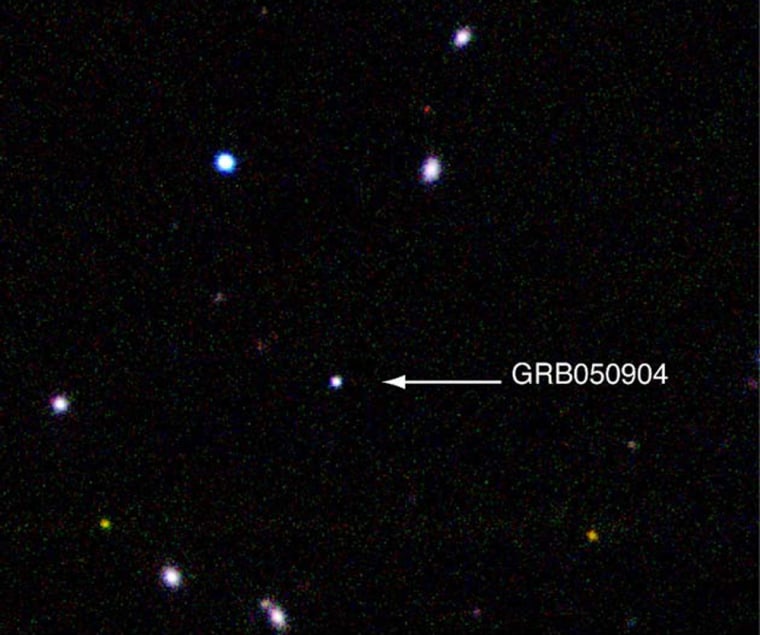A team of international researchers announced today the detection of the farthest space explosion ever recorded, breaking the previous record by 500 million light-years.
Known as gamma-ray bursts (GRBs), the eruptions are giant flares of energetic gamma-rays that can last from less than a second to several minutes. They were accidentally discovered in 1967 by sentry satellites monitoring for breeches of the nuclear test ban treaty.
GRBs signal the explosion of very massive stars that have collapsed into black holes and are the most explosive events to happen in the universe since the Big Bang.
"It's luminosity is such that within a few minutes it must have released 300 times more energy than the sun will release during its entire life of 10,000 million years," said Guido Chincarini, a researcher from the INAF-Osservatorio Astronomico di Brera and leader of the Italian team.
Astronomers believe short GRBs that can last for only fractions of a second are generated when two massive objects, like black holes or neutron stars or even whole galaxies, collide, releasing tremendous amounts of radiation in the process.
The longer bursts, which can last for several minutes, are thought to be the final energetic emissions of massive stars that first undergo tremendous explosions called supernovas before condensing into black holes.
Researchers calculate cosmic distances by measuring the extent to which light from distant stars are "shifted" towards the red part of the electromagnetic spectrum. The higher the redshift, the greater the distance.
The new GRB has a redshift of 6.29, meaning that it occurred when the universe was less than a billion years old. The previous most distant GRB had a redshift of 4.5.
"This is uncharted territory," said Daniel Reichart, an astronomer from the University of North Carolina and the leader of the US team. "We are finally starting to see the remnants of some of the oldest objects in the universe."
GRB 050904, as the new GRB is called, was detected by a joint US/UK/Italian telescope project called Swift. Launched last winter, Swift is designed to automatically detect the first flash of a GRB. Follow-up observations recorded the event in other wavelengths of light.
"We designed Swift to look for faint bursts coming from the edge of the universe," said Neil Gehrels, the Swift principal investigator from NASA Goddard Space Flight Center. "Now we've got one and it's fascinating. For the first time we can learn about individual stars from near the beginning of time."
Once a flash is detected, Swift notifies astronomers worldwide via e-mail, Web sites and even text messages to mobile phones.
During a time when new galaxies and stars were still being born, distant GRBs like the one recently detected were already ancient and in their final death throes. Astronomers can therefore use GRB's to better understand physical conditions of the very early universe and the evolution of stars.
